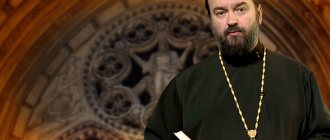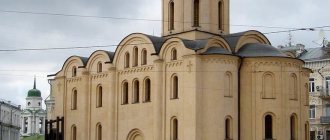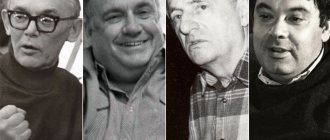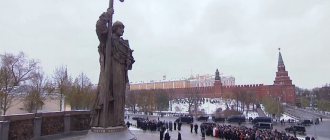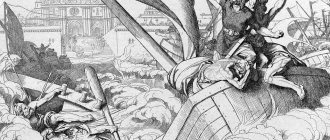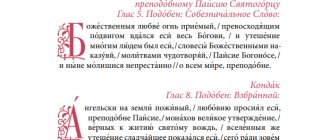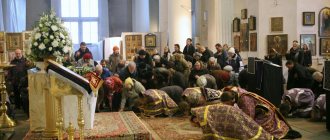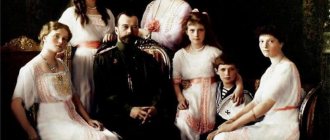The sixth ruler of Kyiv, heir to Igor and Svyatoslav, has many names: Vladimir Svyatoslavovich, Vladimir I the Baptist, holy prince equal to the apostles. However, in people's memory he remained Vladimir the Red Sun, a beloved prince, “father” and protector of the common people.
Why was Prince Vladimir called the Red Sun? Why so kind and gentle? The question is not easy... There are several versions of the origin of this nickname.
Beginning of reign
In 980, the prince became the full-fledged ruler of all Kievan Rus. This happened as a result of the first internecine war in the history of Russia between the heirs of Prince Svyatoslav. The people revered and loved this man. It is difficult to overestimate his services to Russia. As a result of the policies that accompanied the reign of this man, the people began to call him nothing less than the Great. For his services to the church, he was awarded the title “equally apostolic.”
At the beginning of his reign, Vladimir the Red Sun in religious terms was aimed at paganism, because he himself was a convinced pagan. Having come to power, this ruler even ordered new idols of the Slavic God of Thunder - Perun - to be erected in the center of Kyiv. He also had five wives, who bore him twelve sons and several daughters. Trying to divide power between his sons, Vladimir makes each of them the head of one of the twelve largest cities of Kievan Rus. With this decision, he actually began the division of the country, as well as the preconditions for new internecine wars.
The moral image of the prince before baptism
The sources of that time make no secret of the moral image of the prince in paganism. The chronicler speaks openly about Vladimir the pagan and his sins, without absolving him of guilt. His lustful fury at that time was known to the whole world. A contemporary of Prince Vladimir, Titmar Mezhiborsky, calls him “an immeasurable and cruel fornicator.” “Vladimir was overcome by lust,” writes St. Nestor the Chronicler, “is insatiable of fornication, bringing to himself men’s wives and corrupting girls.” Everyone knows the number of his wives and concubines at that time.
Fornication in pagan Vladimir coexisted with cruelty. From pagan Novgorod he moves to Kyiv with the help of violence. At the beginning of 979, Vladimir, through the Varangians, killed his brother and took possession of the principality. Religious pagan reform begins, new idols are erected in the city. In front of his palace, the prince placed a wooden Perun with a silver head and a golden mustache. According to the chronicle, never before has there been such “vile idolatry” in the Russian land. In 983, after a successful campaign against the Yatvingians, a human sacrifice was made to the idols - the Christian Theodore and his son John were killed.
It is clearly visible what sinful extremes the prince served. However, as the apostle remarked, “where sin abounds, there grace abounds” (Rom. 5:20).
God came to save sinners - the reverse process began in the prince’s heart.
Having accepted holy Baptism, he fundamentally changed his life qualitatively, tearing out deep-rooted passions from his heart. The chronicle conveys the prince’s repentance: he realizes that “like a beast, he did a lot of evil in filth and lived like naked beasts.” How does Vladimir become a Christian after all his pagan madness?
Military campaigns
In 981, Prince “Red Sun” went on a campaign to Volyn, which was under the yoke of the Poles. As a result of this military campaign, the cities of Cherven and Przemysl were annexed to the possessions of Kievan Rus. In addition, to strengthen his own influence in this region, the winner lays down a city called Vladimir-Volynsky. This campaign began numerous wars to strengthen and expand the borders of their own state. In 981, new campaigns took place, this time against the Vyatichi. Twice over the years the Kievan Rus squad went on the offensive until victory was won. The following year was marked by campaigns against the Yatvingians, who submitted to Rus' and pledged to pay tribute to Kyiv. After this, it was the turn of another constant enemy - Volga Bulgaria. As a result of this campaign, a peace agreement was signed between the Bulgars and Russians. A little later, Volga Bulgaria was conquered by the Golden Horde and became part of it. Batu Khan became the conqueror of the Bulgars. The city of Kazan was later built to collect tribute in this region. In 982, Prince Vladimir went to the Carpathians, where he managed to conquer the Croatian tribes.
Prince Oleg the Prophet (882 - 912),
Grand Duke of Kyiv
Contrary to the existing stereotype, the word “prophetic” here does not mean “predicting the future,” but rather “prudent, prudent.” We just need to discard the meaning of this word that is familiar to us and take into account the realities of a thousand years ago. Then a rather logical picture, devoid of mysticism, emerges.
Oleg is often called the founder of the Old Russian state. He annexed vast lands to Rus', conquered and subjugated many Eastern European tribes, united the northern and southern centers of the Eastern Slavs, moving the capital to Kyiv, was successful in military campaigns - all this aroused the admiration of his contemporaries.
The nickname given to Oleg fully reflects the attitude of the people towards their ruler as a sensible, far-sighted person.
Baptism of Rus'
One of the main decisions of Vladimir, as the prince of Rus', was the decision to be baptized himself and to baptize all of Kievan Rus. The prince's reign was majestic. He won many glorious victories, which allowed him to feel his own superiority and the superiority of his country over its neighbors. Therefore, he did not want to ask the ruler of Byzantium for baptism. The plan was different - to conquer Byzantium and, as the winner, convert to Christianity. Thus began a new military campaign, this time against Byzantium. In 988, having gathered an army, Vladimir set off along the Dnieper to the Byzantine city of Chersonesus, located in Crimea. Russian ships surrounded the city, setting up a naval blockade. The troops landed on the shore and prepared for the assault. Residents of Chersonesos did not interfere with the landing, since they were confident in the inaccessibility of the city. Russian troops attacked the fortress twice, but to no avail. Then a long siege of the city began. One day, an arrow fell at Vladimir’s feet, apparently fired from the besieged city. A parchment was attached to the arrow, which said that not far from the camp there was a well that fed the Kherson people with water. After this, according to the chroniclers, Prince Vladimir said: “If it comes true, I will be baptized!” He ordered to dig in the indicated place. The pipe was found and destroyed. Thirst forced the inhabitants of Chersonesus to surrender, which allowed Rus' to capture the city.
After the capture of Chersonesos, Vladimir sent a message to Byzantium that he wanted to marry the emperor’s sister Anna. The Byzantines gave the go-ahead, but only if the Russian prince accepted Christianity. Then Prince Vladimir announced his desire to be baptized. All of Rus' was baptized along with Vladimir. Prince Vladimir died in 1015.
Sources and additional material on the topic:
- “Vladimir the Saint” - Karpov A.Yu. Moscow, 2004
- "Kievan Rus. Essays on Russian historiography” - Froyanov I.Ya. Leningrad, 1990
- “Power in Ancient Rus' X-XIII centuries” - Tolochko P.P. St. Petersburg, 2011
Vladimir Svyatoslavovich
Russian statesman. Prince of Novgorod 970-988. Prince of Kyiv 978-1015. From the Rurik family. He was the ruler under whom the Baptism of Rus' took place. Known under the names “Vladimir I”, “Vladimir the Holy”, “Red Sun”, “Vladimir the Baptist”.
Vladimir the Great was born in 960 in the village of Budyatino, Pskov region. According to the Tale of Bygone Years, the boy was the third oldest among the sons of Grand Duke Svyatoslav Igorevich after Yaropolk and Oleg. After the death of Prince Svyatoslav in 972, Yaropolk ruled Kiev. In 977, an internecine war broke out between Yaropolk and his brothers. The specific Drevlyan prince Oleg, retreating in battle, was crushed in a ditch by falling horses. Vladimir fled to the Varangian lands at this news. Yaropolk Svyatoslavich began to rule all Russia.
Meanwhile, Vladimir in Scandinavia recruited an army with Dobrynya and in 980 returned to Novgorod, expelling the mayor Yaropolk. Then he captured Polotsk, which had gone over to Kyiv, killing the family of the city’s ruler, Prince Rogvolod. He forcibly took Princess Rogneda, who had previously been betrothed to his older brother, as his wife. Then he besieged Kyiv with a large Varangian army. According to the chronicle, Voivode Blud, bribed by Vladimir, forced Yaropolk to flee to the small town of Roden, intimidating the people of Kiev with a rebellion. In Rodna, Vladimir lured Yaropolk to negotiations, where two of his Varangians killed the disgraced prince.
According to the chronicle, Vladimir reigned in Kyiv. According to the earliest Life of Vladimir the monk Jacob, this happened on June 11, 978 . The new prince of Kiev took measures to reform the pagan cult. He erected a temple in Kyiv with idols of the six main gods of Slavic paganism.
In 981, Vladimir fought with the Polish prince Mieszko I for the border Cherven Rus. Conquest of Cherven and Przemysl. The following year, for the first time, he annexed the territory of the Vyatichi to the Old Russian state, whom he imposed tribute to. In 983, Vladimir conquered the Balto-Lithuanian tribe of the Yatvingians and established control over Sudovia, which opened the way to the Baltic.
A year later, the prince finally conquered the Radimichi, when the local army was defeated by a Kyiv guard detachment. In 985, Vladimir, in alliance with the nomadic Torques, fought against the Bulgarians. Having won the victory, he made peace with the Bulgars on terms favorable to Rus'. In the same year, he imposed tribute on Khazaria, taking the kagan’s tutul.
The chronicle story about Vladimir’s “choice of faiths” is legendary. Preachers of Islam, Judaism, and Western “Latin” Christianity: Catholicism were called to court, but the prince, after a conversation with the “Greek philosopher,” settled on Orthodoxy.
According to the chronicle, in 987, Vladimir, at a council of boyars, decided to be baptized “according to Greek law.” The next year, 988, he captured Korsun and demanded Anna, the sister of the Byzantine emperors Vasily II and Constantine VIII, as his wife, threatening otherwise to go to Constantinople. The emperors agreed, demanding in turn that the prince be baptized so that his sister could marry a fellow believer. Having received Vladimir's consent, the Byzantines sent Anna and priests to Korsun. Vladimir, together with his retinue, underwent a baptismal ceremony, after which he performed a wedding ceremony and returned to Kyiv, where he immediately overturned pagan idols.
The prince was baptized in 988 . At baptism, Vladimir took the name Vasily, in honor of the reigning Byzantine emperor Vasily II, according to the practice of political baptisms of that time. In Kyiv, the baptism of the people took place relatively peacefully, while in Novgorod, where Dobrynya led the baptism, it was accompanied by uprisings of the people and their suppression by force. In the Rostov-Suzdal land, where the Slavic and Finno-Ugric tribes retained a certain autonomy due to their remoteness, Christians remained a minority even after Vladimir. Baptism was accompanied by the establishment of a church hierarchy. Rus' became one of the metropolises of the Patriarchate of Constantinople. A diocese was also created in Novgorod, Pereyaslavl and Chernigov.
Vladimir pursued an active foreign policy: during his reign he concluded many agreements with different countries. The problem of Rus' remained the raids of the Pechenegs. To defend against them, a number of fortresses were built along the southern border of Kievan Rus. Rows of earthen trenches and outposts were also erected to deter attacks by nomads.
Vladimir adopted all laws in agreement with his council, which consisted of his squad and elders, representatives of different cities. Large cities were organized in a military way, each formed a solid organized regiment, called a thousand, which was divided into hundreds and tens. The prince is also credited with the “Church Charter,” which defines the competence of church courts.
Vladimir I began minting coins: gold and silver, reproducing Byzantine designs of that time. Most of Vladimir's coins depict a prince sitting on a throne. The coin masters were Bulgarians. Zlatniks and silver coins became the first coins issued on the territory of Rus'. The issue of the coin is determined by economic needs.
Only on the coins were the lifetime symbolic images of Prince Vladimir, a man with a small beard and long mustache, preserved. The princely sign of Vladimir, adopted in the 20th century by Ukraine as the state emblem, is also known from the coins. The time of the prince was marked by the beginning of the spread of literacy in Rus', which is associated with Epiphany. Like many other reforms, it was carried out by force.
Prince Vladimir was going to change the principle of succession to the throne and bequeath power to his beloved son Boris. In the last years of Vladimir’s life, Svyatopolk hatched a conspiracy against him, which was discovered and for some time Svyatopolk was imprisoned. Yaroslav stopped transferring tribute and church tithes from Novgorod to Kyiv, after which Vladimir decided to go with his squad against his son, but death did not allow him to do this.
When Grand Duke Vladimir I died of illness in the country residence Berestov on July 28, 1015 , those around him hid his death in order to notify Boris of the death of his father. The fact is that Svyatopolk was in Kyiv: he should not have found out about this before the townspeople, otherwise he would have tried to usurp power. The prince's body, wrapped in a carpet, was secretly taken out at night on a sleigh and brought to the Kyiv Tithe Church, where he was buried.
The Russian Church commemorates him on the day of his death: July 28 according to the Gregorian calendar.
Family of Vladimir I
Father - Svyatoslav Igorevich, Grand Duke; Mother - Malusha, housekeeper of Princess Olga.
Wives: Rogneda of Polotsk (from 978 to 987); 4 unknown wives, Anna of Byzantium (from 988 to 1011);
Sons: Vysheslav of Novgorod, Izyaslav of Polotsk, Svyatopolk the Accursed, Yaroslav the Wise, Boris, Gleb, Svyatoslav Drevlyansky, Vsevolod Vladimir-Volynsky, Mstislav Tmutarakansky, Pozvizd Vladimir-Volynsky, Stanislav Smolensky, Sudislav Pskovsky
Daughters: Predslava, Premislava, Mstislava, Dobronega-Maria, 5 daughters unknown by name.
Military Campaigns of Vladimir I
In 981 (according to another version, based on the earlier date of Vladimir’s reign and the political situation in Poland - in 979), Vladimir fought with the Polish prince Mieszko I for the border Cherven Rus. Conquest of Cherven and Przemysl.
In 981-982, Vladimir for the first time annexed the territory of the Vyatichi, who were subject to tribute, to the Old Russian state.
In 983, Vladimir conquered the Balto-Lithuanian tribe of the Yatvingians and established control over Sudovia, which opened the way to the Baltic.
In 984, Vladimir finally conquered the Radimichi, when the local army was defeated by a Kyiv guard detachment (the Radimichi of the Wolf Tail were running).
In 985, Vladimir, in alliance with the nomadic Torques, fought against the Bulgarians. Some researchers identify them with the Danube Bulgars, however, according to “Memory and Praise”, Vladimir’s opponents were the “silver”, that is, the Volga Bulgars. Having won the victory, Vladimir made peace with the Bulgars on terms favorable to Rus'. In the same year 985, he imposed tribute on Khazaria. Vladimir was called the Khazar title Kagan.
In 988, Vladimir besieged Korsun in Crimea. According to the Tale of Bygone Years, the city surrendered after a long siege, when the Russians dug up the pipes through which water from the wells entered the city. Then the Byzantine emperors sent their sister Anna to marry Vladimir, after which he returned the city to Byzantium and, upon returning to Kyiv, began to baptize the people.
In 989, Russian troops took part in suppressing the rebellion of the Bulgarians and the military leader Varda Phocas.
In 991, a campaign was carried out in the Carpathian lands against the White Croats, which for the first time included them in the Old Russian state.
In 1000, 6 thousand Russians took part in the Byzantine campaign in Armenia.
In 1015, the death of Vladimir found the Kiev army on a campaign led by Boris Vladimirovich against the Pechenegs.
Memory of Vladimir I
Saint Vladimir is considered the patron saint of Ukrainian and Russian Catholics.
Since 2002, the Holy Equal-to-the-Apostles Grand Duke Vladimir has been considered the heavenly patron of the internal troops of the Russian Ministry of Internal Affairs.
His image is consecrated in the Main Icon of the Internal Troops, which is kept in the Transfiguration Church of the Cathedral of Christ the Savior.
The initiative to acquire a particularly revered icon and patron saints of military groups by the internal troops of the Ministry of Internal Affairs of Russia was blessed by Patriarch Alexy II of Moscow and All Rus'.
Orders
In 1782, Empress Catherine II established the Imperial Order of the Holy Equal-to-the-Apostles Prince Vladimir in 4 degrees.
In 1957, the Russian Orthodox Church established the Order of the Holy Equal-to-the-Apostles Grand Duke Vladimir in 3 degrees.
Monuments
In 1853, a monument to Prince Vladimir was erected in Kyiv. Initially, the idea, born in the entourage of Kyiv Governor-General Dmitry Bibikov, to erect a monument to Prince Vladimir on an empty high mountain above the new city center - Khreshchatyk, aroused objections from Kyiv Metropolitan Philaret.
In 1999, a monument was unveiled in Belgorod. Sculptor Vyacheslav Klykov.
In 2007, a monument to Saint Vladimir and Bishop Theodore of Suzdal by sculptor Sergei Isakov was unveiled in Vladimir.
In 2010, a monument to the young Prince Vladimir and his mother Malusha was unveiled in Korosten.
In 2013, a monument to Prince Vladimir was erected in Astrakhan on the 1025th anniversary of the baptism of Rus' and the 455th anniversary of the founding of the city. The monument is located in the park opposite the Cathedral of the Holy Equal-to-the-Apostles Prince Vladimir.
In 2015, a monument to Prince Vladimir was opened in the city of Bataysk (Rostov region). Sculptor Sergey Isakov.
In 2015, a monument to Saint Vladimir was erected by the Ukrainian community in Gdansk, Poland. Sculptor Gennady Ershov.
In the same year, a monument to Saint Prince Vladimir was opened and consecrated in Smolensk.
In 2016, a monument was unveiled on Borovitskaya Square in Moscow. Sculptor Salavat Shcherbakov, architect Igor Voskresensky.
In 2022, on September 27, the Krivoy Rog monument to Vladimir the Great was opened; it became the tallest in Ukraine. The 8-meter sculpture is cast from bronze. The pedestal is 14 meters high. The total height of the monument will be 22 meters. Priests of the UOC MP consecrate the new monument.
It is planned to build a monument to the prince on Victory Square in Kaliningrad.
Prince Vladimir on money
Old Russian coins
Prince Vladimir was depicted on coins of gold and silver coins minted during his reign starting in 988. (see above).
Modern coins and banknotes
Prince Vladimir is depicted on four different Ukrainian 1 hryvnia banknotes (1995-2007) and two coins, 1 and 10 hryvnia. His image (repeating the Old Russian zlatnik) is also on the Soviet anniversary gold coin of 100 rubles, issued in 1988 in honor of the 1000th anniversary of the beginning of Old Russian coinage.
Philately
Monument to Vladimir the Great in Kyiv. Postage stamp of the UPR (Ukraine), 1919. Vladimir the Great. Postage stamp of Ukraine. 2000 Russian Post Card, 2009 Monument to St. Equal to the Apostles Prince Vladimir in Belgorod Envelope of Ukraine 2008 1020th anniversary of the Baptism of Rus' to St. Vladimir
Educational institutions
Comprehensive school of St. Equal-to-the-Apostles Prince Vladimir at the Holy Resurrection Cathedral in Bishkek
St. Vladimir Orthodox School in Moscow
Orthodox gymnasium in the name of the Holy Equal-to-the-Apostles Prince Vladimir in Novosibirsk
St. Vladimir School of the Resurrection Novodevichy Convent in St. Petersburg
13.07.2019
Why was Vladimir canonized?
During his lifetime, the prince made a huge contribution to the spread of Christianity: he baptized Rus' and built many churches where people could learn about God. Many are interested in why Prince Vladimir was nicknamed a saint; he received his title thanks to his great service to the Russian people and his faith in Orthodoxy. They began to call him Equal to the Apostles because he was the first person with whom the Russian people were baptized.
When figuring out why Prince Vladimir became a saint, it is worth noting that he was made such only 100 years after his death. Many people are interested in what is causing this delay. Everything is quite understandable; the people’s memories of his numerous feasts, at which wine flowed like a river, were still fresh in the people’s memory. Church leaders argued for a long time over whether a person with such behavior as Vladimir could claim the status of an apostle of Christ. The positive decision was influenced by the desire to further strengthen the union of church and state.
Icons and temples of the saint
The first icons of Prince Vladimir appeared in the 14th century. Most of the images are half-length or full-length. Less often you can see paintings with fragments of the saint’s life or double icons where he is depicted together with his grandmother, Princess Olga, who was the first to convert to Orthodoxy in Rus'.
Vladimir Svyatoslavich is depicted in princely vestments and a crown, holding an Orthodox cross in his right hand. Sometimes a sword is visible in the left hand of the Equal-to-the-Apostles prince, serving as a symbol of reliable defense of the state. The saint can also hold a scroll with prayer text.
For representatives of the stronger sex, named Vladimir, such icons have a special meaning, since the Grand Duke is their heavenly patron and strong defender. That is why the best gift for a newborn or baptized namesake of the Red Sun will be the icon “Prince Saint Vladimir”.
In 2015, a 24-meter monument was erected to Prince Vladimir in Moscow, on Borovitskaya Square. Its construction was timed to coincide with the millennium since the death of the Baptist of Rus'. An architectural composition dedicated to Vladimir Svyatoslavovich is also available in Kyiv.
Temples of the saint were erected in many cities of Russia. On the site where Vladimir was baptized in 988, today stands a cathedral named after this outstanding ruler of Kievan Rus. It is located within modern Sevastopol. Also, churches built in honor of Vladimir Svyatoslavovich are located in many CIS countries and Europe.
Prince Ivan II the Red (1353 – 1359)
He is Ivan the Meek, Ivan the Gracious, Grand Duke of Moscow. Prince Ivan Kalita is his father.
One of the famous nicknames of Ivan II is Red, at that time this word was understood to mean beautiful. In other words, this may indicate the extraordinary appearance of Prince Ivan.
However, many researchers believe that in reality the nickname was longer.
In their opinion, the prince was originally nicknamed after the time of his birth “Red Hill” - that was the name of the Sunday following Easter.
But over time, part of the nickname was discarded, and in his years John II remained a man of unprecedented beauty.
In addition, in many sources John II is called “Merciful” and “Meek,” which sheds light on the character and moral qualities of the prince.
Here is a living example of how briefly and succinctly - in just a few words - the personality of a ruler can be characterized.
Read about the names of medieval kings of Western Europe here.
And, by the way, what other ancient Russian princes’ nicknames would you like to know about? Write in the comments!
Prince Alexander Nevsky (1249—1263)
Prince of Novgorod, Grand Duke of Kiev, Grand Duke of Vladimir.
Alexander Nevsky, the grandson of Mstislav the Daring, a brave and decisive commander, found worldwide fame on the battlefield.
He received the nickname “Nevsky” in 1240 in a significant battle with Swedish knights on the banks of the Neva. While still a very young prince, Alexander managed to win a brilliant victory over the enemy and defend the original Russian lands.
What do they pray to the Baptist of Rus'?
Believers turn to the Grand Duke with a wide variety of requests. Prayer to Saint Vladimir Svyatoslavich helps:
- heal from many diseases (primarily eye damage);
- protect yourself from the machinations of enemies, the evil intentions of ill-wishers;
- get rid of a danger that threatens health or life;
- safely resolve conflict situations;
- keep your faith unshakable and your soul pure.
In prayers to Vladimir Svyatoslavovich they ask to protect the Russian land from enemies, to help overcome internal problems, and to strengthen the Orthodox faith. Church ministers who experience any difficulties in fulfilling their sacred duties turn to the Baptist of Rus'. He is asked for support in difficult situations, for help in making the right decision.
The holy prince, who tirelessly cared for the defense of Rus', is considered the heavenly patron of the internal troops of the Ministry of Internal Affairs. Those who seek to make a political or other career and want to achieve this in an honest way pray to him.
Prince Andrei Bogolyubsky (1157-1174)
Grand Duke Vladimir
Although Andrei Bogolyubsky is responsible for the construction of churches in the Vladimir-Suzdal principality subordinate to him, it was not a reverent attitude towards religion that caused the appearance of such a characteristic nickname at first glance.
Due to his character, not wanting to live in the ancient centers of the Vladimir-Suzdal principality, Andrei Bogolyubsky built himself a new residence - a white-stone palace near the village of Bogolyubovo, for which he received the nickname.
Continuing the policy of his father, Prince Yuri Dolgoruky, Andrei Bogolyubsky did not recognize the power of the Kyiv Grand Duke.
In 1169, he launched a campaign against Kyiv, as a result of which (for the first time in the history of its existence) the city was taken by storm.
What is most noteworthy is that success in such an enterprise was achieved not by the numerous enemies of the Old Russian state - the Polovtsians, Pechenegs, Poles, but by the Russians themselves.
The name of Prince Andrei Bogolyubsky is well known to fans of medieval weapons, thanks to his battle ax decorated with a fancy pattern. We talked about it in more detail in the article “Battle axes (1): Franks, Vikings, Russians.”
Prince Ivan Kalita (1325 – 1340)
Grand Duke of Moscow
Kalita is an ancient Russian word meaning a small purse or bag for money. There are two versions of the origin of Prince Ivan's nickname.
According to one of them, he was a generous man, sympathetic to the life and fate of the poor, who always willingly gave alms to the suffering and thereby earned good fame among the people.
According to another, Prince Ivan Kalita accumulated untold wealth and willingly bought and exchanged lands in various principalities, including the Novgorod lands, where this was prohibited by law. It is quite possible that both of these versions are true.
Prince Mstislav the Great (1125 – 1132)
Grand Duke of Kyiv
Having ascended the Kiev throne after the death of his father, Prince Mstislav violated the rule of inheritance of power by the eldest in the family, adopted by Yaroslav the Wise.
This caused discontent among many princes, but no one dared to oppose Mstislav, who enjoyed the strong support of the Kyiv elite. In his quest to secure the borders of the Russian state, Prince Mstislav found the glory of a great and talented commander.
Briefly about domestic policy
The internal policy of Vladimir Monomakh can be conditionally divided into two stages: the period before the beginning of his reign in Kyiv and after.
The first period was mainly focused on uniting the princely relatives against the external enemy - the Polovtsians, as well as on suppressing uprisings and pacifying the princes who were especially stubborn in civil strife.
Participation in civil strife and congresses of princes
In 1093, Vladimir’s father, Vsevolod Yaroslavich, who reigned in Kyiv, died. Not wanting new strife, Monomakh ceded the reign to his cousin Svyatopolk Izyaslavich.
However, Monomakh’s opponent was his cousin Oleg Svyatoslavich, who was deprived of his father’s inheritance in the form of the Chernigov principality during the reign of Izyaslav Yaroslavich. Despite the victory over Oleg during the civil strife of 1094-1097, Monomakh, during the Lyubech Congress in 1097, recognized his claims and renounced the Chernigov territories. Wanting to prevent further strife, the princes at this congress proclaimed a new principle of government, “let each one inherit his father’s land,” and pledged to protect each other from the oath breaker.



